Filter by

Introduction to Contracts, Sales and Product Liability
This textbook provides context and essential concepts across the entire range of legal issues with which managers and business executives must grapple. The text provides the vocabulary and legal acumen necessary for businesspeople to talk in an educated way to their customers, employees, suppliers, government officials—and to their own lawyers. Traditional publishers often create conf…
- Edition
- -
- ISBN/ISSN
- 9781453343265
- Collation
- -
- Series Title
- -
- Call Number
- 330 MAY i
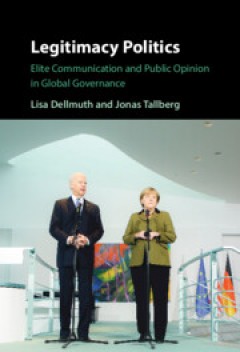
Legitimacy Politics: Elite Communication and Public Opinion in Global Governance
Once staunch advocates of international cooperation, political elites are increasingly divided over the merits of global governance. Populist leaders attack international organizations for undermining national democracy, while mainstream politicians defend their importance for solving transboundary problems.
- Edition
- -
- ISBN/ISSN
- 9781009222020
- Collation
- -
- Series Title
- -
- Call Number
- 327 DEL l
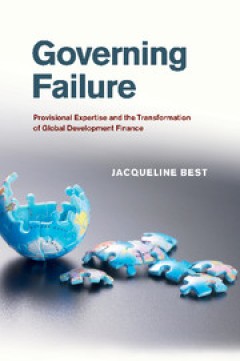
Governing Failure : Provisional Expertise and the Transformation of Global De…
Jacqueline Best argues that the changes in International Monetary Fund, World Bank and donor policies in the 1990s, towards what some have called the ‘Post-Washington Consensus,’ were driven by an erosion of expert authority and an increasing preoccupation with policy failure.
- Edition
- -
- ISBN/ISSN
- 9781139542739
- Collation
- -
- Series Title
- -
- Call Number
- 332.153 BES g
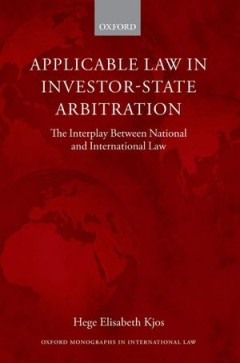
Applicable Law in Investor-State Arbitration : The Interplay Between National…
This book examines the law, national and/or international, that arbitral tribunals apply on the merits to settle disputes between foreign investors and host states. In light of the freedom that the disputing parties and the arbitrators have when designating the applicable law, and because of the hybrid nature of legal relationship between investors and states, there is significant interplay bet…
- Edition
- -
- ISBN/ISSN
- 9780199656950
- Collation
- -
- Series Title
- -
- Call Number
- 347.09 KJO a

Innovative Biofibers from Renewable Resources
This book will be a one-stop-shop for readers seeking information on biofibers that are sustainable and environmentally friendly and those that can replace the non-renewable synthetic polymer based fibers. Emphasis will be on fibers that are derived from agricultural byproducts and coproducts without the need for additional natural resources.
- Edition
- -
- ISBN/ISSN
- 978-3-662-45135-9
- Collation
- XII, 454
- Series Title
- -
- Call Number
- 333.7 RED i
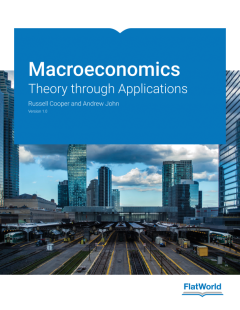
Macroeconomics : Theory through Applications
Russell Cooper and Andrew John have written an economics text aimed directly at students from its very inception. You’re thinking, ”Yeah, sure. I’ve heard that before.“ This textbook, Macroeconomics: Theory Through Applications, centers around student needs and expectations through two premises: … Students are motivated to study economics if they see that it relates to their own li…
- Edition
- -
- ISBN/ISSN
- 9781453328422
- Collation
- -
- Series Title
- -
- Call Number
- 339 COO m

Making Things Stick: Surveillance Technologies and Mexico’s War on Crime
With Mexico’s War on Crime as the backdrop, Making Things Stick offers an innovative analysis of how surveillance technologies impact governance in the global society. More than just tools to monitor ordinary people, surveillance technologies are imagined by government officials as a way to reform the national state by focusing on the material things—cellular phones, automobiles, human bodi…
- Edition
- -
- ISBN/ISSN
- 9780520284043
- Collation
- -
- Series Title
- -
- Call Number
- 323.44 2 GUZ m
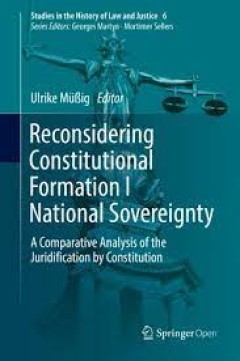
Reconsidering Constitutional Formation I National Sovereignty : A Comparative…
This open access book can be downloaded from link.springer.comLegal studies and consequently legal history focus on constitutional documents, believing in a nominalist autonomy of constitutional semantics. Reconsidering Constitutional Formation in the late 18th and 19th century, kept historic constitutions from being simply log-books for political experts through a functional approach to the in…
- Edition
- -
- ISBN/ISSN
- 978-3-319-42405-7
- Collation
- -
- Series Title
- -
- Call Number
- 320 REC
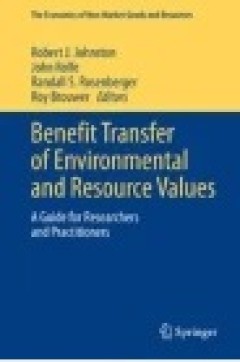
Benefit Transfer of Environmental and Resource Values
This book provides a comprehensive review of environmental benefit transfer methods, issues and challenges, covering topics relevant to researchers and practitioners. Early chapters provide accessible introductory materials suitable for non-economists. These chapters also detail how benefit transfer is used within the policy process. Later chapters cover more advanced topics suited to valuation…
- Edition
- -
- ISBN/ISSN
- -
- Collation
- -
- Series Title
- -
- Call Number
- 330
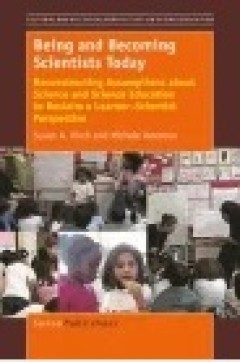
Being and Becoming Scientists Today
The authors provide teachers with an approach to foster and answer these questions by concentrating on learners and learning. They argue that students are typically taught from a disciplinary perspective of science. Using this lens students are viewed as people who need to learn a particular canon of information, methods, and ways of knowing about the world—a perspective that may be useful fo…
- Edition
- -
- ISBN/ISSN
- 978-94-6300-349-0
- Collation
- XVI, 234
- Series Title
- -
- Call Number
- 370
 Computer Science, Information & General Works
Computer Science, Information & General Works  Philosophy & Psychology
Philosophy & Psychology  Religion
Religion  Social Sciences
Social Sciences  Language
Language  Pure Science
Pure Science  Applied Sciences
Applied Sciences  Art & Recreation
Art & Recreation  Literature
Literature  History & Geography
History & Geography